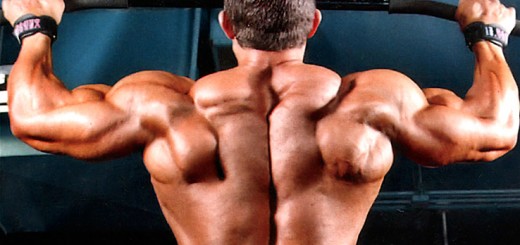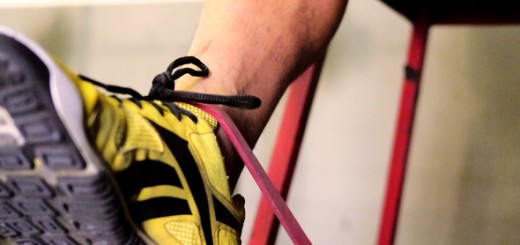My current routine is to work out at my neighborhood CrossFit affiliate on Mondays, Wednesdays and Fridays. I’m willing to drag myself out of bed for 5 a.m. workouts three times a week because: (1) I can finish and get home before the kids wake up, (2) only one or two other people attend the early-morning class, which means I get a better shot at receiving one-on-one coaching, and (3) I’m not yet awake enough to fully comprehend how egregiously the workout’s going to kick my ass.
On the days I’m not scheduled to go to my CrossFit gym, however, I’m at a bit of loss as to what to do.
Option One: I can take the opportunity to sleep in and do nothing, giving my body a much-needed breather so it can properly recover. But this would be the smart thing to do, and I’m definitely an idiot, so I rarely do this.
Option Two: Keep going balls-out. This was my brilliant plan when I started CrossFit. I figured I’d do Tony Horton’s 30-15 Upper Body Massacre or an Insanity workout on my CrossFit “off-days.” But I tried this once, and Shaun T knocked me on my ass so hard that I had a hard time mustering up the strength to finish the next day’s CrossFit metcon. So scratch that.
Option Three is to squeeze in some sort of workout, but lower the intensity level so that I leave a little something in the tank. Yoga’s not a bad idea, or I could do some running. But frankly, my preference is to use my “off-days” to practice the moves that form the basis of most CrossFit workouts: Olympic lifts, kettlebell exercises, gymnastics, rowing – all the fun stuff. And based on how I’ve been doing at the gym, I need all the practice I can get.
At first, I thought I’d have to re-join a big globo-gym to get access to the equipment I’d need. But then I read this article in the CrossFit Journal explaining how to fully equip one’s home gym for CrossFit. It sounded fun, so I started cramming stuff into our little garage. Here’s a partial inventory:
Pull-Up Bar
I’m actually using the same rafter-mounted pull-up bar I bought back when I started P90X. I was afraid that my flailing, violently arrhythmic attempts at developing a kip might loosen the big-ass lag bolts holding the bar in place, but so far, it’s managed to stay solidly attached to the joists. My only issue is the knurling on the bar, which is chewing up my hands. I’m now wearing gloves when I practice my kipping pull-ups, but down the road, I may need to build my own pull-up bar out of some scrap pipe and some threaded flanges. (More about pull-up bar options here.)
Dumbbells
I still have my trusty Bowflex SelectTech dumbbells, and M uses them when she works out to her Chalene Johnson videos. For CrossFit, however, I’m partial to our set of regular old hex dumbbells. Why? Because at the end of an exhausting metcon session, there’s a good chance I’ll lose my grip on my dumbbells and send them crashing down on the floor – and the SelectTechs aren’t sturdy enough to survive a big drop.
Concept2 Rower
The Concept2 is the rowing machine of choice for CrossFitters, and we happen to have had one sitting around in our garage already. It’s not gotten a lot of use over the years, so I’m getting reacquainted with it. But I’m still awful at rowing.
Kettlebells
When I started doing kettlebell training a few months ago, I bought a pair of kettlebells from DragonDoor.com. They’re brutal beauties and I love ‘em, but they’re not cheap. I recently came across the Kettlebell King website, which features the cheapest kettlebell pricing I’ve seen online. I’m thinking about picking up a couple more kettlebells, and if I order from the Kettlebell King, I’ll post a review.
Olympic Bar & Bumper Plates
By far my biggest purchase for CrossFit was my set of bumpers and an Olympic bar.
(What are bumpers, you ask? Bumper plates are solid rubber weight plates for your Olympic bar, and can be dropped without destroying your equipment, floor and house. Bumpers are all the same diameter, regardless of weight, so that when a bar loaded with plates is resting on the floor, it’ll always be at the same starting height for certain lifts.)
I agonized over what exactly to buy, and from which vendor. After doing a decent amount of research on the CrossFit message boards, I ended up ordering a basic O-lifting set from Rogue Fitness. It’s awesome. There’s nothing like practicing Olympic lifts to simultaneously build strength and speed — a.k.a. power. Now, I’m able to work on my deadlifts, front squats, hang cleans, jerks, push presses and thrusters from the (relative) comfort of my garage. And believe me – I need the practice.
Plus: having big, heavy weights to move around makes me feel macho in a way that watching The Real Housewives of New Jersey with my wife does not.
Squat Stand
To properly lift, I needed a squat stand. Some are extremely expensive, but I got a very basic (and cheap!) PowerLine stand from Amazon.com, and I’ve been very happy with it. It arrived quickly and was a breeze to assemble, unlike the craptastic, hulking, useless Power Tower that still occupies valuable space in the corner of our garage.
Plyo Boxes
I love my wooden plyo boxes despite the fact that I keep accidentally gashing open my fingers, ankles and shins with them. I bought a 20-inch wooden box from Rogue Fitness along with a 4-inch booster box so that I could practice 24-inch box jumps. They’re exhausting, but with the possible exception of kettlebell swings and snatches, there’s no better way to crank out an explosive, heart-pounding workout in less than 10 minutes.
Gymnastic Rings
I got a pair of EFX rings from Amazon.com, and mounted them on the ceiling of my garage (about 12 feet up) just a few days ago. I have a TRX system already installed in the garage, and it works well for dips, but I wanted to be able to do muscle ups properly, and the TRX handles aren’t ideal for false grips. Also, my TRX mount was installed only eight feet off the ground, and I wanted the rings up above my head.
Parallettes
Following instructions from the CrossFit Journal, I made a pair of parallettes out of PVC pipe, primer and cement, and they’re surprisingly sturdy. I’m working on building up my L-sit time, and I can’t wait to use ‘em for handstand push-ups (once I actually learn how to do them, that is).
Jump Rope
My Buddy Lee Aero Speed jump rope finally arrived in the mail a couple of days ago, and I’m already addicted. I am totally in love with this rope. I’m still intimidated by the prospect of having to master the double-under, though.
Medicine Ball
According to most CrossFitters, Dynamax medicine balls are the way to go. I bought a 20-pound Dynamax ball, and have been practicing medicine ball cleans for the past week. The ball is massive and somewhat difficult to grip, which is what makes it so challenging and fun to toss and catch. I’ve also built a 10-foot-high Wallball target in the rafters above my garage, but so far, I’ve had mixed success (in truth: no success) stringing together any decent reps of Wallball throws unless I’m aiming at a lower (8-foot-high) target.
Incidentally, the founder of Dynamax now thinks CrossFit is crap, but it’s not stopping CrossFitters from scooping up Dynamax heavy medicine balls like squirrels hoarding nuts.
Even when I was a kid on the hunt for Star Wars action figures, baseball cards and stickers, I knew the pleasures of collecting stuff. I’m enjoying CrossFit not only because of the challenge of the workouts and the improvement in my fitness level, but also because I have an excuse to stock up on toys.
But I also recognize that accumulating all this crap can get expensive. If your resources are limited, prioritize your equipment purchases.Here’s a detailed article about the equipment that’ll offer the most bang for the buck when it comes to doing CrossFit WODs.
Alternatively, you can roll up your sleeves and make some of your own gear. There are lots of DIY resources available online, and plenty of folks on the CrossFit Discussion Board post instructions on how to build your own equipment. You can make your own medicine balls, or even use sandbags in place of Olympic weights.
Go nuts. It’s fun.
Original Article by: FitBomb






